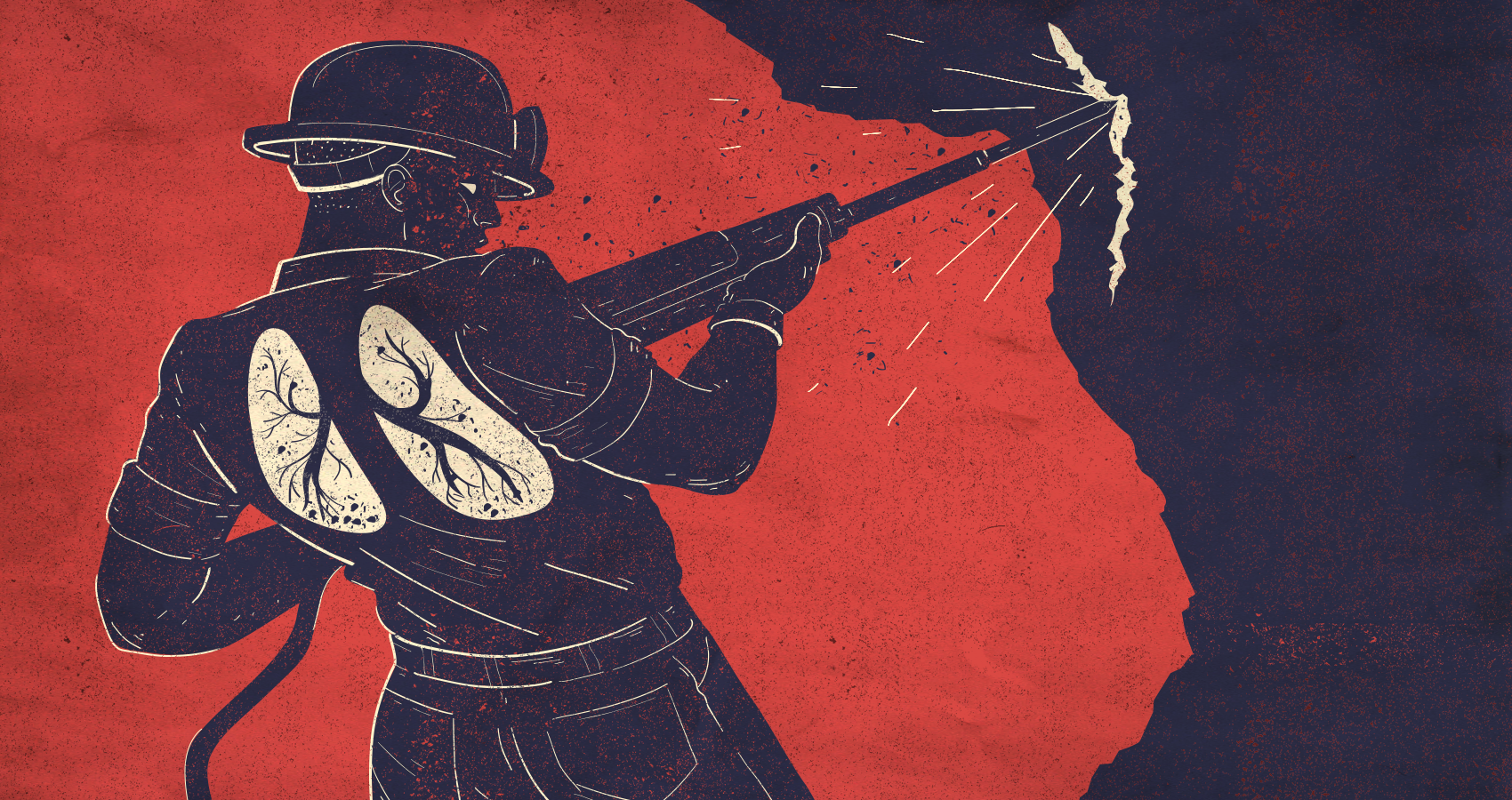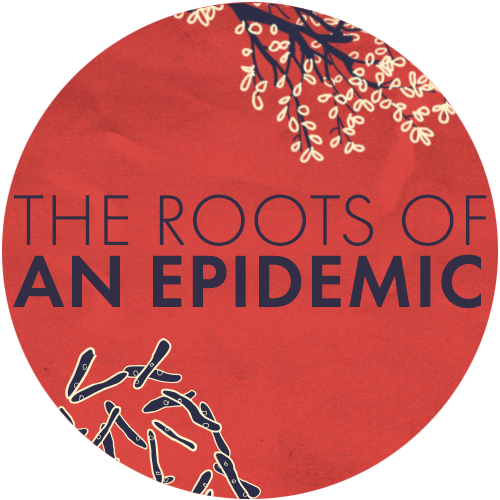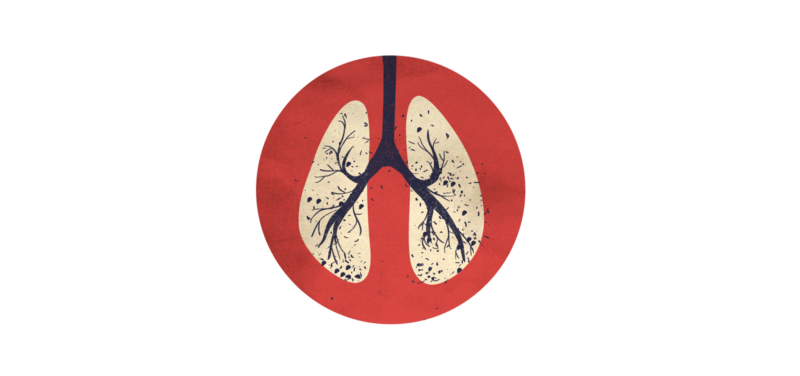
Read the next installment: “We Need More Than Technology to Eliminate Tuberculosis“


For nearly two centuries after her first autopsy, nobody knew what had really killed Irtyersenu. When the mummy of the Egyptian woman–who died in 600 BC–was examined by pathologists in the 1820s, they concluded that she had died of ovarian cancer. But further investigations in the 1980s dismissed this hypothesis, provoking new mystery about her cause of death. The inflammation in her lungs offered a clue.
In 2009, advances in DNA technology finally allowed scientists to detect the lethal organism that was present in samples of tissue all over Irtyersenu’s body: lungs, gallbladder, bone. She had died of tuberculosis, commonly known as TB–and the discovery established Irtyersenu as the first known mortality from a disease that, almost three millennia later, still killed around 1.6 million people last year.
One in four people worldwide are thought to have the TB mycobacterium, which is airborne, present in their lungs. A healthy immune system can easily keep it walled in, allowing infection to lie dormant indefinitely. But when this defense is weakened–which can result from a variety of factors, such as poor nutrition, HIV infection, or exposure to toxic dust–it becomes difficult to contain the mycobacteria, which leads to active disease.
In 2017, 10 million people around the world developed active TB disease. The infection usually starts in the lungs, but if left untreated it can spread to any part of the body. A surprising range of seemingly unrelated health problems may result from this–genital TB, for example, is increasingly recognized as a major contributor to infertility in high-prevalence countries, and young children are especially vulnerable to TB meningitis, which has a high fatality rate. In 2017, nearly one in six people who developed active TB died from it.
In light of these gloomy statistics, it might seem that knowledge on how to manage TB has not progressed much since the days of Irtyersenu. Yet there are now diagnostics that can rapidly detect TB, including drug-resistant TB, in under two hours. There are also medicines which can cure most cases of TB, though these treatments haven’t advanced much since the 1950s, and they require lengthy treatment with unpleasant side effects.
Despite these developments, one of the oldest diseases on the planet remains the leading cause of death from an infectious agent. The reasons for this stretch beyond the realm of biomedical science. For example, in southern Africa, a region with some of the highest incidence rates of TB in the world, the evolution of the TB epidemic over the past century has been interwoven with the history of gold.

In the British House of Commons in December, 1902, the Secretary of State for the Colonies faced a string of accusatory questions about the health and safety of British men working on the gold mines in South Africa. Members of Parliament were particularly concerned with silicosis and TB, broadly referred to as miners’ phthisis. “In view of the death rate from miners’ phthisis in Johannesburg, and the fact that miners return home to this country incapacitated by this disease,” a member of the chamber said, could the secretary provide statistics on the number of cases and fatalities? Specifically, “what number of these are Europeans, and what number native?”
While these concerns were framed as a matter of workers’ rights, the repatriation of migrant miners with TB back to England also had public health implications, since it could contribute to further transmission and disease. Cases of TB in Britain had spiked dramatically with the advent of the industrial revolution, as more people moved to cities, living in congested and unhygienic conditions that were conducive to the spread of infectious disease. By the early 19th century, TB was the cause of one in four deaths in England. The disease was so prominent in society that it became romanticized, influencing literature, music, and fashion trends.
In contrast, rates of TB had been relatively low–by some accounts, nonexistent–in South Africa and other countries in the region during the same period. While TB became more common as local populations mixed with European migrants, the scale of disease was nowhere near the levels seen in 19th-century Britain. But as the colonial gold-mining industry created systems of circular migration by employing African workers, both from South Africa and neighboring countries, the prevalence of the disease began to change.
Mining for gold requires drilling and blasting rocks, a process that produces dust containing toxic microscopic particles known as crystalline silica. In the absence of adequate dust-reduction measures, gold miners working underground are exposed to massive quantities of crystalline silica. Excessive inhalation of these particles puts them at lifelong risk of an irreversible and often debilitating disease known as silicosis, which can manifest up to 20 years after silica exposure ends.
Silicosis causes inflammation and scarring of the lungs–and it also increases the risk of TB. In the past, the relationship between silica exposure and TB was thought to be limited to miners who had developed silicosis. But research has established that, even in the absence of silicosis, silica dust independently increases the risk of TB, likely due to its destructive impact on the immune cells that guard against active TB disease.
Even though the mechanism of the link between silica and TB was not fully understood in the early 20th century, it was well known that gold mining was associated with an increased risk of TB, and that the disease was connected to both dust exposure and the migrant workers’ congested living quarters. In the decades following the 1902 House of Commons hearing, regulatory bodies in South Africa discussed this issue extensively, in a flurry of commissions of inquiry and international conferences that led to new regulations.

All of these efforts, however, both reflected and reinforced the racial inequalities of the time. In South Africa’s Gold Mines and the Politics of Silicosis, Jock McCulloch provides a detailed breakdown of how these inequalities played out in the systems created by the mining industry to regulate silicosis and TB. Black miners were placed in more risky underground jobs that involved higher exposure to dust, whereas white miners were put in safer, supervisory roles. All miners were regularly examined for TB, but the diagnostic methods for black miners were rudimentary, and, as the South African Institute of Medical Research warned in 1927, they failed to identify more than half of all TB cases. In the 38% of cases that were detected, the disease was usually already in its later stages, when the miner was already dying.
When white miners were diagnosed with TB, they were often referred to sanatoria supported by the mining companies and the government; black miners were instead simply returned to their home villages. This controversial repatriation system was a major channel through which TB was spread around the region–and it transferred the costs of the disease from the mining industry to the communities from which miners came. Multiple surveys found that within one year of being repatriated to their home communities with various illnesses, over 40% of black miners had died.
But even as the evidence piled up, the system of recruitment and repatriation continued. Doctors voiced their concerns, even using utilitarian logic to get the point across. “From the point of view of the future labour supply of the rand, there seems no doubt a mistake is being made,” Dr. Alexander Frew warned in 1910. “We are sending back a great many boys who used to die on the mines, and now these boys are going back to their kraals in increasing numbers and there will be through them a rapid increase in the amount of Tuberculosis at their homes.”
But while many officials raised their concerns behind closed doors, they refused to do so publicly. “No senior medical officer publicly criticised the system,” McCulloch writes. “On the contrary, without exception the senior figures in Johannesburg colluded in the practise of what can best be described as racialised medicine.”
As Frew had noted, the mining industry’s neglect for the health of the black workforce also endangered the health of the communities from which they came. When the chair of a 1921 commission recounted a recent trip alongside an industry recruiter through the Eastern Cape–a province that today has one of the highest rates of TB in South Africa–he said, “The tuberculosis in those kraals was astonishing, distressing, not only in adults but in children.” A doctor working in the province in 1918 observed that at least 15% of local men given a cursory exam were found to be infected, and cautioned, “After over 25 years working among the natives, I am quite satisfied that tuberculosis is increasing amongst them, and is likely to continue to increase.”
This pattern extended beyond the borders of South Africa, to neighboring countries in southern Africa from which additional mining labor was drawn. Early 20th-century studies in Malawi (then called Nyasaland by the British) prompted by rising tensions around health and safety in the mines, noted a steep rise in TB. Disease was initially concentrated among migrant mine workers, but it soon spread among their families and communities when they visited home. “The main source of infection lies in Rhodesia and the Union [of South Africa],” wrote the doctor in charge of the African Hospital at Zomba. “The disease being brought back to this country by Nyasaland natives who have been employed in the South. In this way multiple foci of infection now exist in the Protectorate itself.”

In 1925, a report from the Native Recruiting Corporation detailed affairs in Basutoland (now Lesotho). Its authors observed that “the Government Doctors here [in Lesotho] complain of the bad state of health in which the Basuto are sent back from Johannesburg; they say in some cases they are unfit for travel, and when they come here have to go into hospital and die or have to be kept for months. They say that the mines should bear the expense.”
But the expense was considered too great for an industry whose profit margins depended on cheap, disposable labor. In a public inquiry carried out in the 1940s, the British secretary for public health in SA testified that the mines were producing more tuberculosis than any other industry. While TB rates had fallen among white miners due to their preferential working and living conditions, there had been no parallel decline among black miners.
After reviewing all the evidence, the chair of the commission, James Stratford, issued the most radical recommendations that had been made to date: black miners with TB should receive the same benefits that white miners did. This meant a pension, as well as free board and medical care in special sanatoria. The latter provision would not only benefit black miners with TB but also reduce the spread of the disease in their home communities.
But an assessment by the government actuary led the industry to reject Stratford’s recommendations; McCulloch estimates that if the mining industry had paid just 10% of the plan’s cost, gold mines would have ceased to be profitable. “In rejecting the Chamber’s protests that the mines could not afford to pay,” he writes, “Stratford concluded that if that were true, the mines must be so dangerous that they should be closed.”
However, closing the mines was not an option in a country where they formed the cornerstone of the economy–and where official policies were geared toward the dehumanization of the majority-black population. And so circular migration of labor–and related migration of disease–continued throughout the 20th century, and the epidemic soon became endemic across the region.

Today, even though mathematical modeling suggests that mining production in sub-Saharan Africa is associated with an increased incidence of TB, the diffusion of TB in the general population–and the many other factors that now drive transmission and disease–mean that only a small proportion of the overall TB burden is now found in miners.
The spread of the HIV epidemic contributed substantially to this: the immune system damage caused by HIV leads to increased rates of active TB disease, which in turn increases transmission. Through the 1990s and 2000s, TB incidence rose dramatically in countries with high rates of HIV prevalence. This effect was particularly marked in miners, among whom HIV rates are higher than they are among the general population. While silicosis increases the risk of active TB threefold and HIV increases the TB risk fivefold, research has shown that, when both conditions are present in an individual, the combined increase in TB risk is not additive but multiplicative–in other words, the risk is fifteen times higher. It is not surprising, therefore, that South African gold miners are now known to have the highest incidence rates of TB in the world.
Occupational lung disease affects not only the current workforce but also the huge numbers of ex-miners that were recruited from various African countries–more than 1.5 million people over the past 45 years alone, 1.3 million of whom were gold miners–and, by extension, these workers’ home communities. The term encompasses a range of diseases that develop in industries like mining and construction, due to toxic substances in the work environment.
A 1998 study on occupational lung disease among former gold miners in the Eastern Cape confirmed that there was a high prevalence of undiagnosed, uncompensated occupational lung disease in this population, a situation which had allowed the mining industry to externalize the true cost of its labor force. “As a result of the failure to diagnose and compensate occupational lung disease,” the study emphasized, “the social and economic burden of such disease is being borne by individuals, households, and the migrant labor-sending communities as a whole.”
A century after after it was first flagged by colonial medical officers, this perspective is now accepted as fact. “It’s not ideological to say that [the mining sector’s] profits were maintained at the expense of black miners’ health,” says Rodney Ehrlich, a medical doctor, professor and researcher at the University of Cape Town’s Centre for Occupational and Environmental Health Research. Ehrlich has conducted extensive research on, and provided clinical services for, occupational lung disease in ex-miners.
In recent years, the proverbial chickens have come home to roost, thanks to an unprecedented wave of litigation against gold mining companies. The 20th-century laws introduced to regulate miners’ health and rights were designed to minimize mining companies’ liability. Miners were not allowed to sue their employers directly, and the laws limited the amount of monetary compensation. But, in 2006, Thembekile Makhanyi sued the corporation AngloGold Ashanti for silicosis that he had developed while working in their mines in South Africa. When his case was rejected by the high court, he appealed to the Supreme Court. They ruled in his favor five years later–one week after his death.
While this landmark ruling came too late for Makhanyi and an unknown number of other miners who lost their lives to silicosis, TB, and other occupational lung diseases, it opened the door for living miners to pursue further litigation. Since then, three lawsuits against mining companies have been settled, including, most recently, the first-ever class-action lawsuit covering miners with silicosis and TB, which is currently awaiting court sign-off. For miners who are able to navigate the complex bureaucracy of filing claims to prove that they have occupational lung disease, these settlements will entitle them to a one-off payment.
But Ehrlich, who also served as an expert witness for the plaintiffs’ attorneys in the class-action suit, sounds doubtful when I ask whether he believes that this will cause fundamental change in the lives of former miners with damaged lungs. It will no doubt offer some much-needed financial relief and a form of justice to successful claimants, but, he points out, “given the structural conditions under which ex-miners live, it remains to be seen what fundamental changes lump sum payouts will bring.”

With TB now endemic across the region, it is these broader structural conditions, tied up with deeply rooted systemic inequalities, that sustain the disease’s continued toll. A recent study examined the public health impact in Cape Town of apartheid-era forced removals, a practice in which black people were relocated to the peripheries of urban centers. These geographical divides persist today, leaving many black workers with lengthy daily commutes in poorly ventilated public transport, which creates an environment conducive to TB transmission.
While South Africa may provide one of the most lucid illustrations of how political and economic factors have shaped the evolution of the TB epidemic–a topic explored more broadly in Randall Packard’s White Plague, Black Labor: Tuberculosis and the Political Economy of Health and Disease in South Africa–the country is not exceptional in this regard. It simply reflects the dynamics that influence many global health problems.
Ehrlich cites several contemporary examples in which circular migration may be resulting in ongoing transfers of occupational injury and disease burdens from workplaces to workers’ communities, such as farmhands traveling between Central America and the U.S., Nepalese and Indian migrant construction workers working in the Persian Gulf states, and Burmese fishermen in Southeast Asia.
“You can substitute different diseases in different countries, but you are likely to see similar impacts on health as happened with circular migration in Southern Africa,” Ehrlich says. “Structural influences prevail, including huge inequalities within and across borders, because that is how our global society is organized.”
Across the world, mining and other sectors such as construction continue to generate occupational lung disease, exacting a heavy toll on communities even as they fuel macro-economic development. In India, which currently accounts for over a quarter of the global TB burden, there have been recent reports of “villages of widows”–communities where many of the men work in mines and suffer untimely deaths due to occupational lung disease, leaving their wives and other dependents stranded in poverty.
“It is useful to be acquainted with history,” the Swedish poet Linn Hansén wrote. “It keeps repeating itself as if we liked it.”

“TB is a disease of poverty” has become a cliché in the TB research community. Occupational disease is just one of a huge range of social determinants that inform this statement. Any strategies to end TB, therefore, cannot be complete without a deeper effort to understand and engage with the context-specific structural conditions that influence the spread of disease.
This may mean strengthening regulation on silica-producing industries, or improving nutritional health, since undernutrition is one of the biggest risk factors for TB (according to the World Health Organization, undernutrition is responsible for twice as many cases of TB as it is for HIV). Suitable housing is key to reducing transmission, too. Even in low-prevalence countries like Canada, which has one of the lowest nationwide rates of TB in the world, recent TB deaths among children from indigenous populations have put a spotlight on the importance of addressing the social inequities faced by these communities.
“I see this tension in all aspects of global health–tension between medical and technical interventions that are focused on disease control, versus the broader issue of addressing socioeconomic determinants,” says Madhukar Pai, a medical doctor and the director of McGill University’s International TB Centre, which is based in Montreal but is involved in research across the world.
Pai has applauded the surge in political commitment around TB–like the upcoming high-level meeting on the disease at the United Nations–as a landmark opportunity to shift the tide on this ancient disease. I ask him if he believes that TB elimination is a realistic goal in the absence of more radical political shifts to address inequity, and whether the global health field engages sufficiently with these realities.
“I worry about this all the time,” he tells me. “Social determinants are critical drivers of the epidemic. This is as true in rural India as it is true in the Canadian North. Folks in the TB field are aware of this . . . but, at its heart, our global TB response is still biomedical. This is true for most of what we do in global health.”
Pai emphasizes that we need both biomedical interventions and structural change to address social determinants. “But when budgets are limited,” he says, “policymakers and donors invariably opt for focused, simple, inexpensive technical fixes.” To break this cycle, he recommends that we push for universal health coverage and multisectoral responses: for countries to deliver on the promise that health is a human right.
But in many countries the idea of health care as a universal human right, while faultless in principle, is highly political in practice–even aside from the social determinants of disease, which are often rooted in decades, if not centuries, of oppressive economic structures. So, as heads of state meet to discuss TB, the enduring toll of one of the oldest diseases on earth offers an opportunity to reflect on the fact that science can only take us so far. Global health problems need political solutions.
Special acknowledgements to the late Professor Jock McCulloch, whose book South Africa’s Gold Mines and the Politics of Silicosis was a source for much of the information in this article. His extensive research made a valuable contribution to our understanding of colonial history in this area.

Read the next installment: “We Need More Than Technology to Eliminate Tuberculosis“

How We Get To Next was a magazine that explored the future of science, technology, and culture from 2014 to 2019. The Roots of an Epidemic is a four-part series on tuberculosis, the leading cause of death from an infectious agent around the world.
